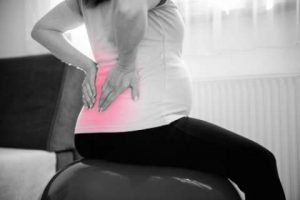Project Description

pregnant woman
If you have never been to a chiropractor before, you might be wondering what to expect, and if it’s safe for your baby.
The scientific evidence points towards a positive affirmation. After reviewing thirty-three different references, it was determined chiropractic treatment was safe for pregnant women (source). In fact, all chiropractors learn how to treat pregnant women specifically as part of their training (source).
Normal biomechanical changes during this time can result in discomfort and pain during pregnancy and labor. These changes include weight gain, anterior shift in center of gravity, increased lumbar lordosis, and laxity of lumbopelvic ligaments; as well as postural changes and altered gait pattern. Many obstetric providers are unaware that the resulting musculoskeletal conditions and their related symptoms can be managed and improved with chiropractic care and patient education. Following are some of the musculoskeletal conditions that occur:
Back Pain
Your big belly is a joyous symbol that your little one is growing well. However, your protruding belly may also cause back pain. There are a number of reasons for this. Have you ever heard of the pregnancy waddle? It’s a real thing and the most common reason for back pain.
this. Have you ever heard of the pregnancy waddle? It’s a real thing and the most common reason for back pain.
You lean backwards as your center of gravity changes. You bend your knees less and splay your hips out more (source). All of this means your body is no longer maintaining a healthy posture, which can lead to some serious back strain.
You may also experience back pain due to (source):
- Weight gain.
- Hormone changes.
- Stress.
Sciatic Nerve Pain
Hypertonicity in the gluteal muscles and deep external rotators can irritate or compress the sciatic nerve during pregnancy. Some studies suggest the baby’s growth contributes to uterine pressure on supporting vasculature or direct compression of the sciatic nerve, which results in low back pain with radiation into the legs.8
Sacroiliac Pain
Ligament laxity caused by hormonal changes during pregnancy allows these traditionally stable and primarily weight-bearing sacroiliac joints to move and shift. This increased mobility puts stress on the surrounding ligaments and muscles, which may cause pain. Patients sometimes incorrectly describe their discomfort as “hip pain,” however they indicate the sacroiliac joint as the area of complaint.
Pubic Symphysis Pain
During pregnancy, the hormone Relaxin allows the ligaments stabilizing the pubic symphysis joint to relax, and therefore allows the joint to move and separate.
Your pelvis is the large bone structure located at the bottom of your spine. The pelvis supports your trunk and connects your trunk to your legs. It also supports many of your internal organs (source).
SPD occurs when the hormones meant to prepare your body for delivery work a little too well, causing the ligament between the two bones of the symphysis pubis to become relaxed (source). Your pelvis is held in place by these muscles and, if they become too stretchy, your pelvis can become misaligned.
This, in turn, can cause serious pelvic pain.
Round Ligament Pain
The round ligaments of the uterus contain contractile fibers, and suspend and connect it to the anterolateral abdominal wall on either side. As the uterus grows, the round ligaments also stretch and can cause a sharp pain on either side of the abdomen or at the attachment sites of the ligaments near the pubic bones or labia.
Nausea
Morning sickness can leave pregnant moms feeling incapacitated for long stretches of time. Unfortunately, the exact causes of morning sickness and nausea during pregnancy are unknown. Hormonal imbalances and the continued changes to your nervous system are all believed to play a role.
Studies have found visiting the chiropractor may lessen the severity and duration of morning sickness. Since morning sickness most often occurs during the first trimester (source), it is a good idea to think about setting up an appointment with a chiropractor as soon as you discover you are pregnant.
Better Baby Positioning
During the third trimester, or the last three months of your pregnancy, your body experiences a number of changes as you prepare to give birth. Hormones relax and stretch the muscles in your pelvis. Your belly seems to drop as your baby descends to the birth canal.
An important aspect of the third trimester is your baby’s position inside your womb. If your baby is not in the right position, labor can be both difficult and dangerous. Correctly aligning your pelvis through stretches, exercises, and spinal manipulation can help your baby move into a better position for birth, with the head towards the birth canal (source).
Postpartum Healing
The benefits of chiropractic care do not end once you have given birth.
Birth can be traumatic for your body and cause the pelvis to become misaligned once again. Recovering mothers often experience pain and soreness in the days and weeks after labor. They may also find it hard to move around, leading to more complications.
Chiropractic care after birth can bring about many of the same benefits, reducing back and pelvic pain, supporting a healthy nervous system, and allowing mothers to improve their overall quality of life.
Dr. Papuga can help press the reset button on your body, alleviating pain, strengthening your nervous system, and contributing to the overall health of you and your little one.
At Wheaton Healthcare, Dr. Papuga knows what it takes to help you maintain or get back to good health with chiropractic care. You deserve it. If you have any questions, give us a call at 630.690.4040 or schedule your appointment today.
Recieve a 10% discount on all services. Ask us how.
